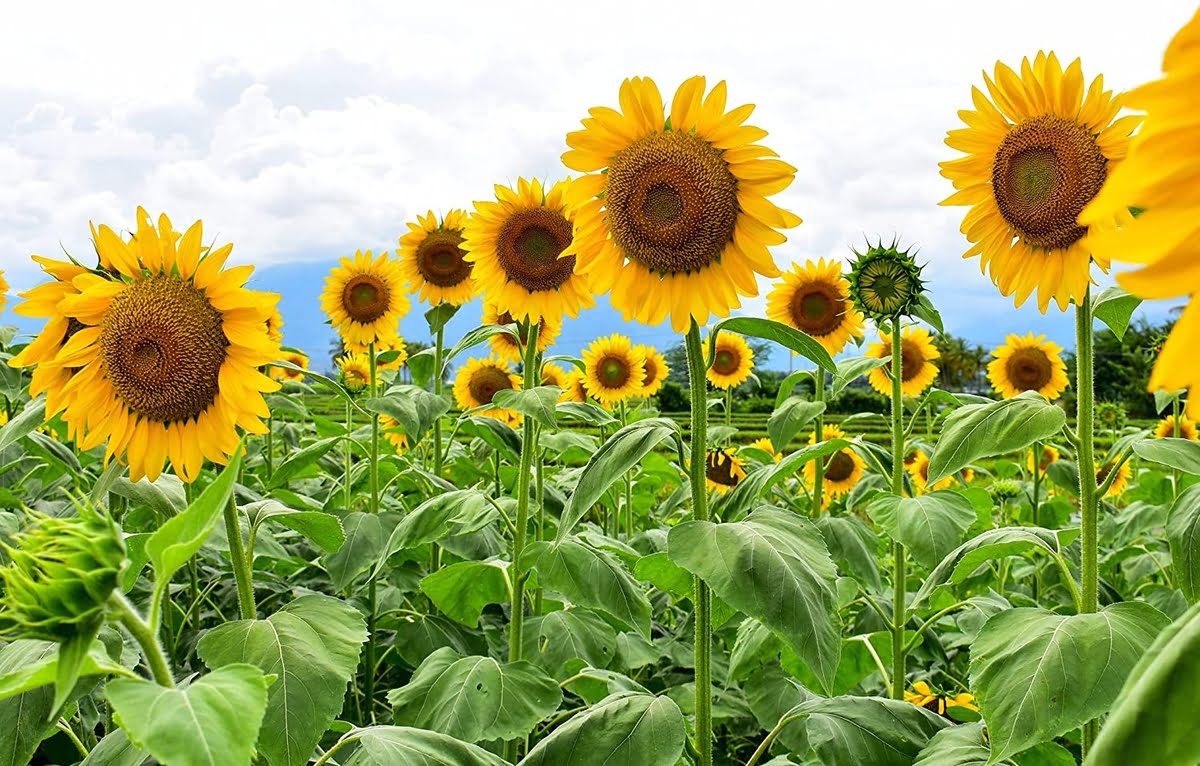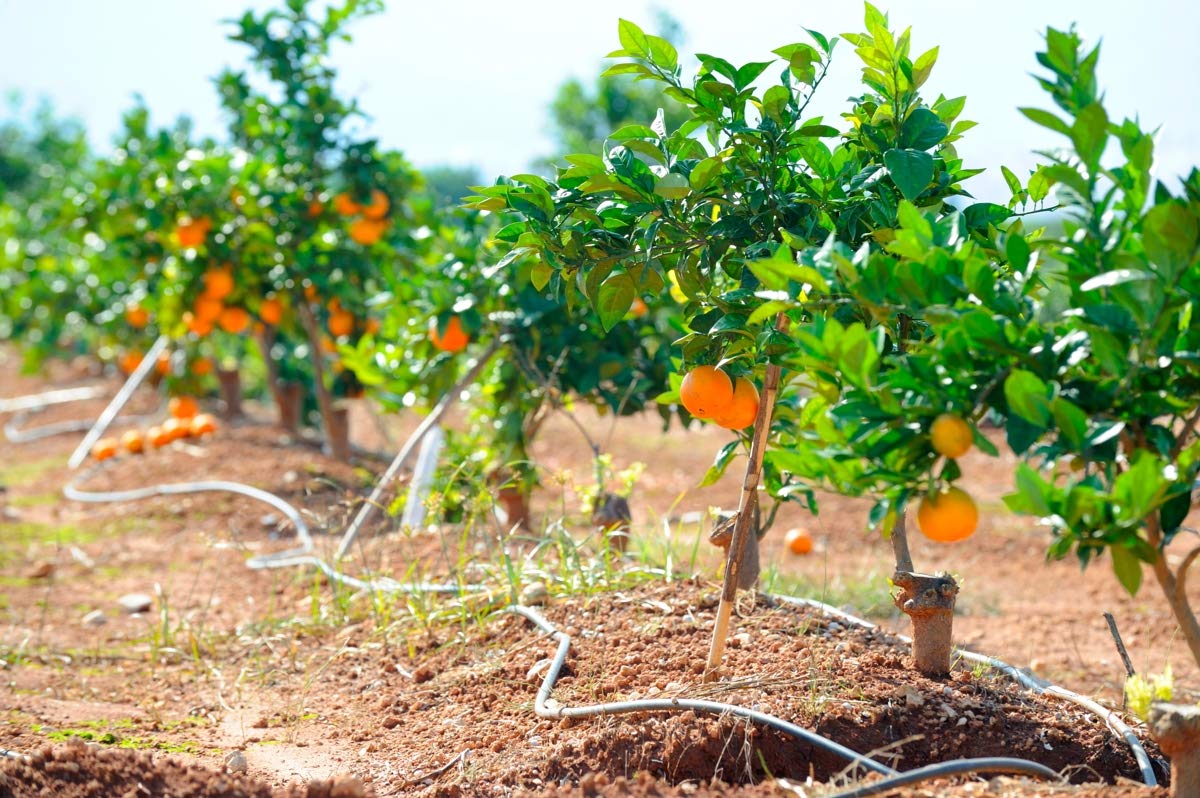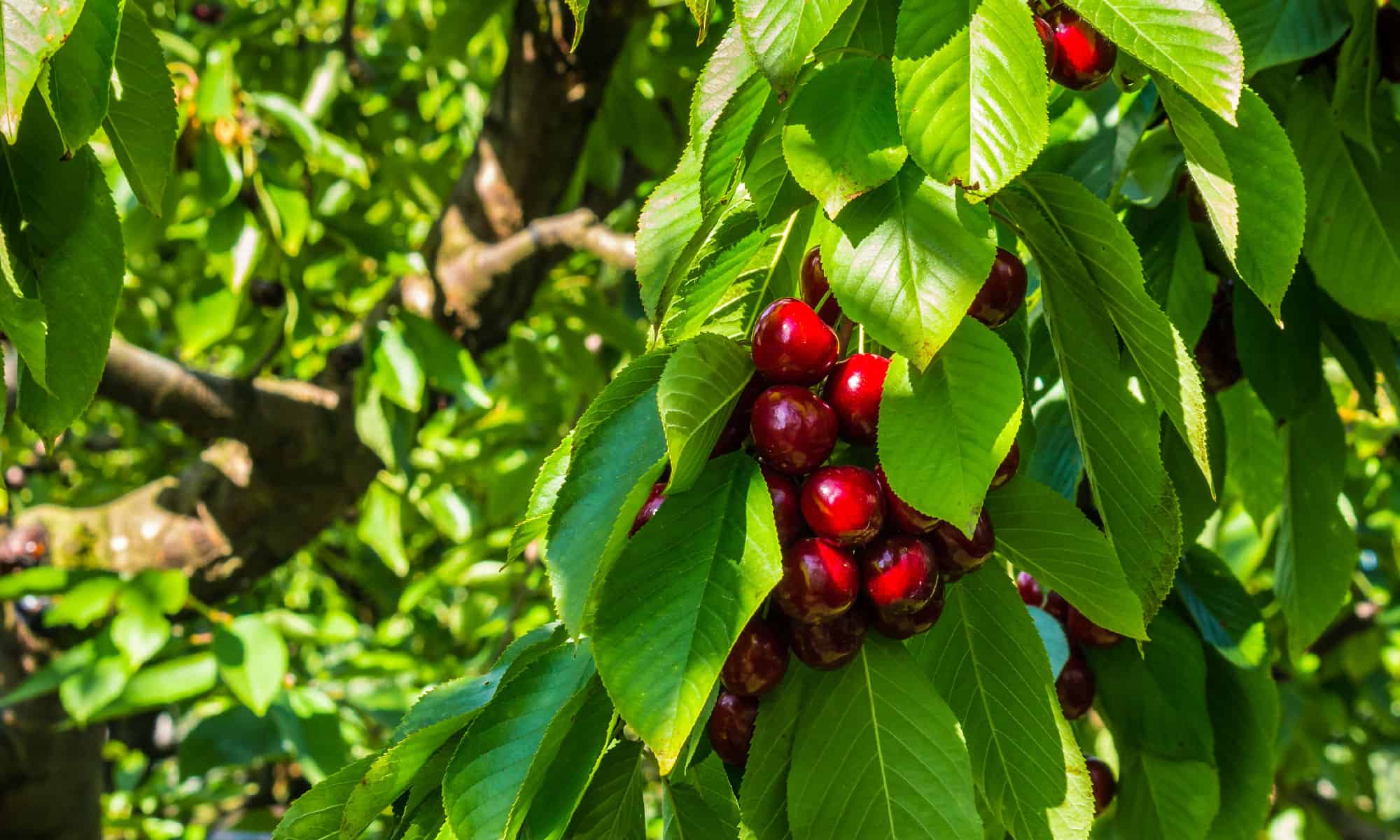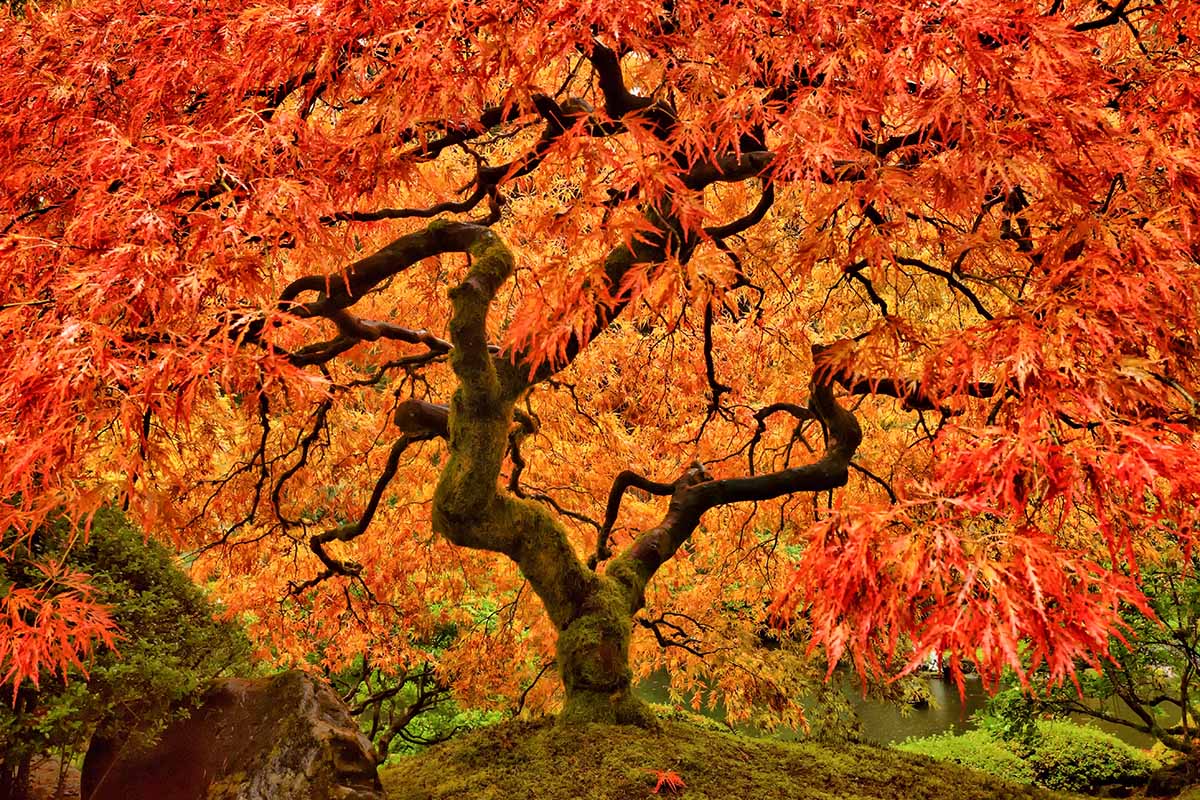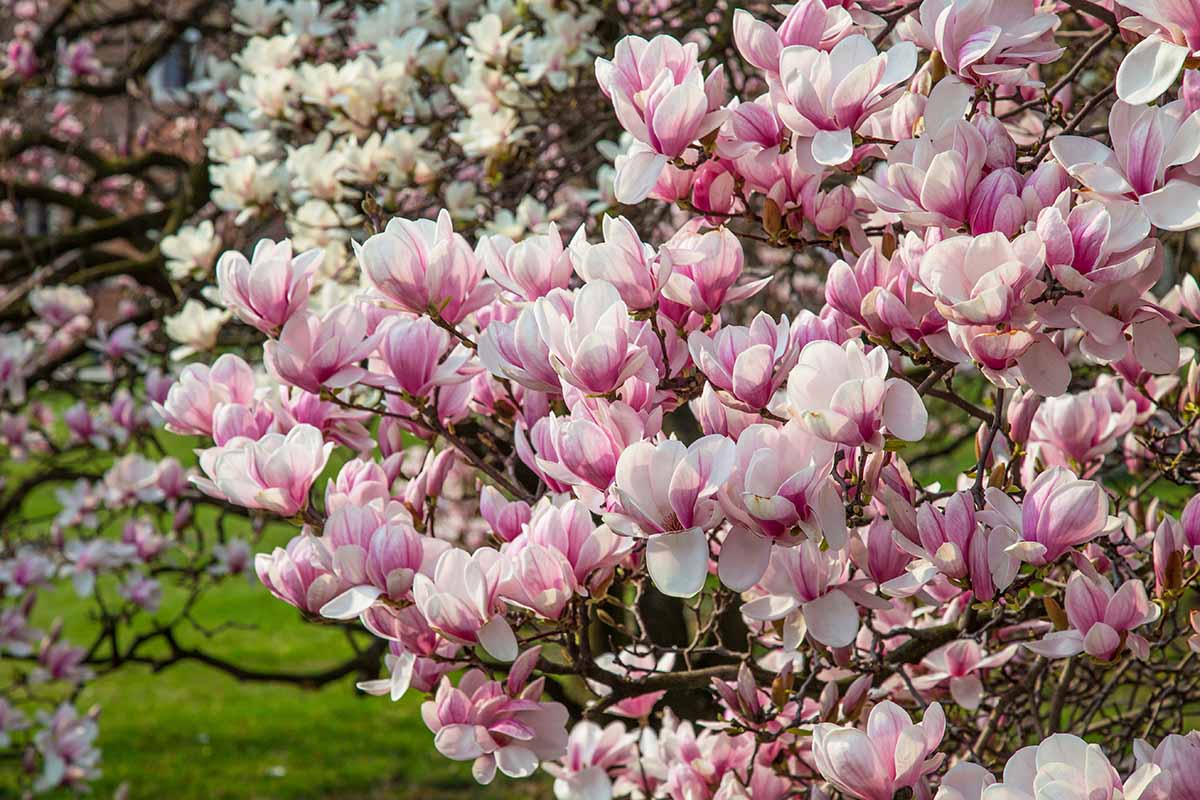Home>Gardening Techniques>Plant Care>How Long Does It Take Christmas Trees To Grow


Plant Care
How Long Does It Take Christmas Trees To Grow
Modified: January 22, 2024
Discover the timeline for growing Christmas trees with our comprehensive guide. Learn all about plant care and how long it takes for these festive trees to reach their full glory.
(Many of the links in this article redirect to a specific reviewed product. Your purchase of these products through affiliate links helps to generate commission for Chicagolandgardening.com, at no extra cost. Learn more)
Table of Contents
Introduction
Christmas trees are an iconic symbol of the holiday season. They bring festive cheer into our homes, and their magnificent presence adds a touch of magic to any celebration. But have you ever wondered how long it takes for these enchanting trees to grow? The journey from a tiny seedling to a fully-grown Christmas tree is a fascinating one, influenced by various factors and requiring careful nurturing.
In this article, we will delve into the world of Christmas tree growth, exploring the factors that affect their development, the different varieties available, the optimal growing conditions, and the time required for these beautiful trees to reach their full potential. So, if you’ve ever been curious about the process behind getting those picture-perfect Christmas trees into our living rooms, keep reading!
Before we dive into the specifics, it’s important to note that Christmas tree farming is an essential industry, providing us with the beautiful trees that become the centerpiece of our holiday decorations. These trees are cultivated by dedicated farmers who invest a considerable amount of time, effort, and expertise to ensure the growth and quality of each tree.
Now, let’s explore the key factors that play a role in the growth of Christmas trees.
Factors Affecting Growth
Just like any other plant, the growth of Christmas trees is influenced by a variety of factors. Understanding and providing the right conditions for these factors can significantly impact the growth and overall health of the trees.
1. Soil Quality: The quality of the soil is crucial for the growth of Christmas trees. Well-drained soil with good fertility and a pH level between 6 and 7 provides an ideal environment for their development. The soil should also be rich in organic matter to promote root growth and nutrient absorption.
2. Climate and Temperature: Christmas trees have specific climate requirements. Different varieties have different temperature preferences, but most thrive in cool to mild climates with moderate humidity levels. Extreme heat or frost can have detrimental effects on their growth, so it’s essential to select suitable tree species for specific regions.
3. Sunlight Exposure: Sunlight is vital for photosynthesis, the process by which plants convert light into energy. Christmas trees generally require full sun to partial shade for optimal growth. Proper exposure to sunlight ensures that the trees can produce ample nutrients and develop a robust structure.
4. Watering and Irrigation: Adequate water supply is essential for the growth and survival of Christmas trees. They typically require about 1 inch of water per week, depending on the variety and weather conditions. Proper irrigation techniques, such as drip irrigation or sprinklers, help ensure that trees receive sufficient moisture without waterlogging the soil.
5. Nutrient Availability: Christmas trees need a balanced supply of nutrients to thrive. Essential nutrients like nitrogen, phosphorus, and potassium are crucial for their growth. Regular soil testing can help determine the nutrient levels and guide the application of fertilizers to maintain the optimal nutrient balance.
6. Pest and Disease Management: Like any other plant, Christmas trees are susceptible to pests and diseases. Common pests include aphids, mites, and bark beetles, while diseases like root rot and needle blight can affect their health. Implementing proper pest and disease management strategies, such as regular monitoring and appropriate treatments, is vital to ensure the well-being of the trees.
By understanding and addressing these factors, Christmas tree farmers can create a conducive environment for tree growth and maintain healthy and vibrant trees for future holiday seasons.
Varieties of Christmas Trees
There is a wide variety of Christmas trees to choose from, each with its own unique characteristics and appeal. The selection of the perfect tree largely depends on personal preference, regional availability, and suitability for different climates. Here are some popular varieties:
1. Fraser Fir: The Fraser fir is highly regarded for its classic pyramid shape, strong branches, and excellent needle retention. It has dark green needles with a silver underside, giving it a beautiful two-tone appearance. The Fraser fir is native to the Appalachian Mountains and is a popular choice for its soft needles and pleasant fragrance.
2. Balsam Fir: This tree is known for its symmetrical shape and dark green, fragrant needles. The balsam fir has strong branches that can support heavy ornaments, making it a favorite among many. It is native to North America and thrives in cool climates with moist soil.
3. Douglas Fir: The Douglas fir is a versatile tree with soft, blue-green needles. It is known for its conical shape and dense foliage, providing a lush appearance. The Douglas fir is adaptable to various climates and is a popular choice for its pleasant aroma.
4. Colorado Blue Spruce: If you prefer a tree with a unique bluish tint, the Colorado blue spruce is an excellent option. It has sturdy branches that can support heavy decorations and sharp, prickly needles. This tree is native to the Rocky Mountains and requires well-drained soil and full sun.
5. Noble Fir: The noble fir is known for its striking beauty and longevity. It has rich green needles with silvery-white undersides, giving it a frosty appearance. The noble fir has strong branches that can hold heavy ornaments and provides a fresh, long-lasting scent.
6. Eastern Red Cedar: The Eastern red cedar is a popular choice for its excellent durability and fragrance. It has dense foliage with deep green needles and produces small berries that add a festive touch. This tree is native to eastern North America and can tolerate a wide range of soil conditions.
These are just a few examples of the wide variety of Christmas trees available. Each tree has its own unique characteristics, so take the time to explore and find the one that suits your preferences and the climate of your area.
Growing Conditions
Providing the right growing conditions is crucial for the successful cultivation of Christmas trees. Here are some essential factors to consider:
1. Soil: Christmas trees thrive in well-drained soil with good fertility. The soil should have a pH level between 6 and 7, which is slightly acidic to neutral. Regular soil testing can help determine the nutrient levels and guide the application of fertilizers.
2. Climate: Different tree species have varying climate preferences. Some trees, like the Fraser fir, prefer cooler climates, while others, like the Eastern red cedar, can tolerate a wider range of temperatures. Ensure that the selected tree species will thrive in your specific climate.
3. Sunlight: Christmas trees generally require full sun to partial shade for optimal growth. Adequate sunlight is crucial for photosynthesis, which is the process by which the trees convert light into energy. Choose a location for planting that provides the right amount of sunlight throughout the day.
4. Watering: Proper watering is essential for the growth and survival of Christmas trees. They typically require about 1 inch of water per week, depending on the variety and weather conditions. Apply water evenly across the root zone and avoid waterlogging the soil, as excessive moisture can lead to root rot.
5. Fertilization: Regular fertilization is crucial to provide the necessary nutrients for tree growth. Conduct a soil analysis to determine any nutrient deficiencies and apply fertilizers accordingly. It’s important to strike a balance, as over-fertilization can harm the trees.
6. Weed and Pest Control: Weeds can compete with Christmas trees for nutrients and water, so proper weed control is important. Regular maintenance, such as manual weeding or mulching, can help suppress weed growth. Additionally, implementing pest management strategies is crucial to protect the trees from common pests and diseases.
7. Pruning and Shaping: Regular pruning helps maintain the desired shape and density of the Christmas trees. Prune away any dead or diseased branches and shape the tree to ensure a symmetrical appearance. Pruning should be done during the dormant season to minimize stress on the trees.
By providing optimal growing conditions, you can ensure that your Christmas trees grow healthy, robust, and ready to become the centerpiece of holiday celebrations.
Time Required for Growth
The time required for a Christmas tree to reach its full growth depends on several factors, including the tree species, growing conditions, and desired tree height at harvest. On average, it takes about 6 to 10 years for Christmas trees to reach the desired height for harvesting.
Tree species play a significant role in the growth rate. Some species, like the Fraser fir and noble fir, tend to have slower growth rates, requiring more years to reach the desired size. On the other hand, faster-growing species like the Douglas fir and Eastern red cedar may reach harvestable heights in a shorter period.
Growing conditions also impact the tree’s growth rate. Factors such as soil quality, climate, sunlight exposure, and proper watering and fertilization practices all contribute to the tree’s overall health and growth. Providing optimal conditions can help trees grow faster and healthier.
Additionally, the desired height at harvest determines the time required for growth. Trees intended for tabletop displays or smaller spaces can be harvested at a younger age, typically between 4 to 6 years. However, if you’re aiming for a taller and more majestic tree, it may take closer to 10 years or even longer to reach that height.
It’s important to note that Christmas tree farming requires long-term planning and patience. Farmers must carefully manage their tree plantations, ensuring proper maintenance, pest control, and nurturing throughout the years. This commitment and attention to detail help produce high-quality trees for the holiday season.
By understanding the time required for growth, consumers can appreciate the effort and dedication that goes into producing the beautiful Christmas trees we enjoy in our homes each year.
Harvesting and Selling
The process of harvesting and selling Christmas trees is a crucial phase in the Christmas tree farming industry. Proper timing and techniques ensure that the trees maintain their quality and freshness, making them desirable for consumers.
When it comes to harvesting Christmas trees, timing is essential. Trees are typically harvested in late autumn or early winter, just before the holiday season begins. This ensures that the trees are at their peak freshness and retain their needles throughout the holiday period.
Harvesting techniques vary depending on the tree species and the intended market. Many farmers use mechanical harvesters to efficiently cut and collect the trees. For smaller operations, manual cutting with sharp tools remains a common practice. Care is taken to create a clean and even cut at the base of the tree to ensure proper water absorption when placed in a stand.
After harvesting, the trees are bundled and transported to designated selling locations. Christmas tree farms often have their own on-site retail areas, while others distribute their trees to local retailers, garden centers, or seasonal tree lots.
The presentation and display of the trees are crucial for attracting customers. Trees are usually displayed upright in stands and organized by size and variety. This allows customers to easily browse and select the perfect tree for their home.
To ensure customer satisfaction and promote good needle retention, it’s recommended to provide customers with care instructions. These may include tips on how to properly water the tree, how to avoid heat sources that may dry it out, and how to dispose of the tree after the holiday season.
Throughout the selling process, customer service and engagement play a crucial role in establishing customer loyalty and satisfaction. Knowledgeable staff members who can assist with inquiries, provide guidance, and properly handle transactions create a positive buying experience.
After the holiday season, unsold trees are either donated or responsibly recycled. Many communities offer tree recycling programs or encourage mulching the trees for use as organic material.
The harvesting and selling phase is an essential part of the Christmas tree industry, allowing farmers to share their hard work and dedication with families and individuals looking to bring joy and warmth into their homes during the holiday season.
Conclusion
The journey from a tiny seedling to a majestic Christmas tree is a fascinating and intricate process. Understanding the factors that affect tree growth, exploring the different varieties available, providing optimal growing conditions, and carefully managing the harvesting and selling phases are all vital components of the Christmas tree industry.
Christmas tree farmers dedicate years of hard work, patience, and expertise to cultivate these beautiful trees. They navigate the challenges of soil quality, climate, and pest management to ensure that the trees grow healthy and vibrant.
Consumers also play an important role in supporting the Christmas tree industry. By understanding the time required for growth and the intricacies involved in bringing Christmas trees to market, they can appreciate the dedication and commitment that goes into providing the perfect centerpiece for their holiday celebrations.
Whether it’s a Fraser fir standing tall in the living room, a balsam fir emanating its fragrant scent, or a Colorado blue spruce with its unique bluish tint, Christmas trees bring joy and magic into our homes. They symbolize the spirit of the holiday season and serve as a focal point for creating lifelong memories with loved ones.
So, the next time you admire the beauty and allure of a Christmas tree, remember the journey it took to grow and make its way to your home. From the carefully selected seedlings to the meticulous nurturing and the festive atmosphere of the harvest and selling, every step is a labor of love for those dedicated to this cherished holiday tradition.

